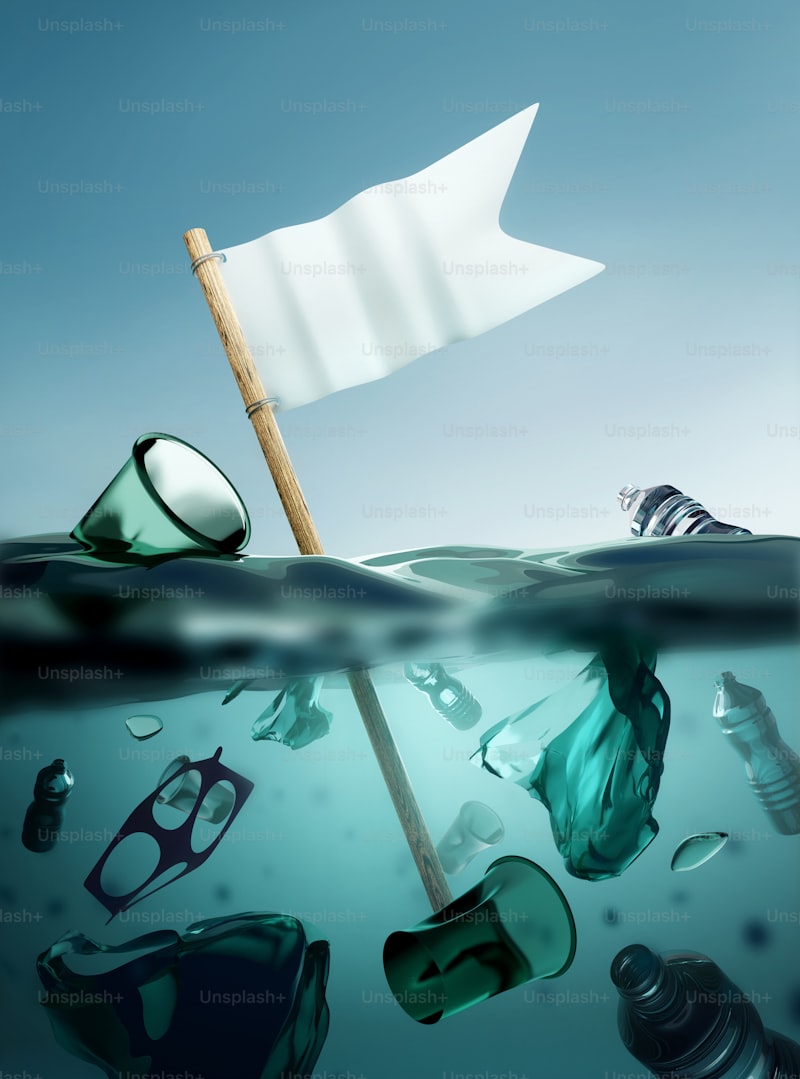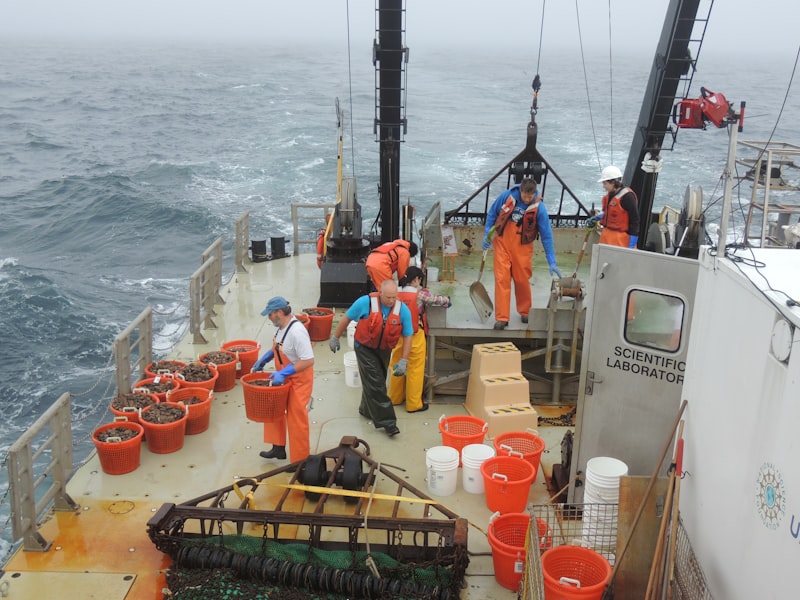Another key innovation involves the use of biodegradable materials in everyday products. Companies are increasingly turning to bioplastics and other eco-friendly alternatives to reduce the impact of plastic pollution on marine life. These materials break down more easily in marine environments, minimizing their long-term ecological footprint.
Furthermore, technology plays a crucial role in monitoring and managing marine pollution. Remote sensing devices and drones equipped with sensors can detect pollution hotspots and track the movement of pollutants in real-time. This data allows scientists and environmental agencies to respond swiftly and effectively to pollution incidents, preventing further damage to marine habitats.
Education and awareness also form an essential part of tackling marine pollution. Campaigns and initiatives educate communities and industries about the consequences of pollution and promote sustainable practices. By empowering individuals and organizations to take action, we can collectively reduce the amount of waste entering our oceans.
Addressing marine pollution requires a multifaceted approach that combines technological innovation, sustainable practices, and community engagement. By embracing these solutions, we can protect marine ecosystems for future generations and ensure a healthier planet for all.
From Ocean Drones to Seaweed Farms: Cutting-Edge Technologies Tackling Marine Pollution

From ocean drones to seaweed farms, innovative technologies are revolutionizing the battle against marine pollution. Picture this: fleets of autonomous drones gliding silently across vast oceans, equipped with sensors that detect pollutants in real-time. These drones, like vigilant guardians of the sea, not only identify areas of contamination but also collect vital data for scientists and environmentalists.
Imagine a world where seaweed isn’t just a marine plant but a powerful tool against pollution. Seaweed farms are emerging as eco-warriors, absorbing excess nutrients like nitrogen and phosphorus that cause harmful algal blooms. These farms act as natural filters, purifying the water and creating habitats for marine life.
In this age of technological prowess, the synergy between innovation and environmental conservation is striking. Engineers and scientists are pushing boundaries to develop biodegradable plastics that break down harmlessly in marine environments. These next-generation materials promise to reduce the plastic footprint in our oceans, offering hope for a cleaner future.
But it’s not just about high-tech solutions. Community-driven initiatives are making waves too. Coastal communities are embracing sustainable fishing practices and shoreline clean-ups, fostering a sense of responsibility towards our oceans.
As we navigate the complexities of marine pollution, one thing is clear: the future lies in collaboration. Governments, industries, and individuals must join forces to protect our oceans. Each innovative step, whether big or small, contributes to the greater goal of preserving marine ecosystems for generations to come.
This article aims to engage readers with vivid imagery and a narrative style, emphasizing the transformative impact of technology and community efforts in combating marine pollution.
Biodegradable Nets and Eco-Friendly Booms: Innovations Redefining Marine Waste Management

Biodegradable nets are a game-changer in fishing practices. Unlike traditional nets that contribute to ghost fishing when lost or abandoned, biodegradable nets break down naturally over time. Made from materials like plant-based fibers or bioplastics, these nets minimize the harmful impact on marine life and ecosystems. Imagine fishing gear that not only catches fish but also ensures the ocean remains pristine for future generations.
Similarly, eco-friendly booms are making waves in marine waste cleanup efforts. Traditionally used to contain oil spills, these booms are now being adapted with biodegradable materials. They act as barriers to collect floating debris, from plastics to organic waste, preventing further contamination of marine habitats. Picture a barrier that not only traps pollutants but also biodegrades harmlessly, leaving no trace once its job is done.
These innovations are more than just technological advancements; they represent a shift towards sustainability and responsible environmental stewardship. By choosing biodegradable nets and eco-friendly booms, industries and governments alike are taking proactive steps to mitigate their impact on ocean ecosystems. It’s a step towards cleaner seas and a healthier planet overall.
As awareness grows about the devastating effects of plastic pollution in our oceans, the demand for such innovations is on the rise. Consumers and businesses are increasingly choosing products and technologies that align with their values of sustainability. Biodegradable nets and eco-friendly booms not only meet this demand but also set a new standard for marine waste management.
Community-Led Cleanups and Coastal Guardians: Local Initiatives Making Waves Against Marine Pollution
Imagine strolling along a once litter-strewn shoreline, now transformed into a pristine stretch of sand thanks to dedicated volunteers armed with gloves and trash bags. These cleanup events not only remove harmful debris but also prevent it from further endangering marine life and ecosystems. Each piece of plastic or discarded item collected is a step towards safeguarding our oceans, one beach at a time.
These initiatives go beyond mere cleanup activities. They inspire local residents to take ownership of their coastal environments, instilling a sense of pride and responsibility. By actively participating in these cleanups, community members become firsthand witnesses to the impact of pollution on marine habitats. This direct experience often sparks a ripple effect, prompting individuals to adopt more sustainable practices in their daily lives and advocate for better waste management policies in their communities.
Coastal guardians, as these dedicated volunteers are often referred to, embody the spirit of environmental activism. They are not waiting for governments or large organizations to act but are taking matters into their own hands, driven by a deep-seated passion to protect our oceans. Their efforts are like small drops in a vast ocean, collectively making waves that resonate far beyond the shoreline.
In many ways, these local initiatives serve as a reminder of the power of collective action. They demonstrate that even seemingly small contributions, when multiplied across communities, can have a profound impact on preserving marine biodiversity and combating the global challenge of marine pollution. As we look to the future, these grassroots movements serve as beacons of hope and inspiration, showcasing what can be achieved when communities come together for a common cause.
The Rise of Smart Buoys: How Sensor Technology Is Monitoring and Mitigating Ocean Pollution
Imagine these buoys as vigilant guardians of the sea, constantly scanning their surroundings and sending vital data back to researchers and environmentalists. They operate tirelessly, day and night, providing a continuous stream of information that helps in understanding the dynamics of pollution and its impacts on marine ecosystems.
Unlike traditional methods that rely on periodic sampling, smart buoys offer a proactive approach. They not only detect pollutants but also track their movement and concentration levels. This capability is crucial for quick response strategies, allowing authorities to mitigate pollution incidents promptly.
Moreover, the data gathered by smart buoys is instrumental in formulating effective environmental policies and regulations. By pinpointing pollution hotspots and identifying sources, policymakers can make informed decisions to protect our oceans and coastal areas.
In essence, smart buoys represent a beacon of hope in the fight against ocean pollution. They embody the fusion of innovation and environmental stewardship, leveraging cutting-edge technology to safeguard marine life and preserve the integrity of our oceans for future generations.
Harnessing Nature’s Filter: How Mangrove Restoration Is Combatting Marine Pollution
Mangrove forests, often overlooked heroes of coastal ecosystems, are playing a crucial role in the battle against marine pollution. These unique ecosystems not only provide a natural habitat for diverse marine life but also act as formidable filters for pollutants. Mangroves possess a remarkable ability to trap sediment and absorb nutrients, effectively purifying coastal waters.
Restoration efforts focused on mangrove ecosystems have gained significant traction in recent years. By planting and nurturing mangrove trees, environmentalists and local communities are revitalizing these vital coastal buffers. The benefits extend beyond mere aesthetics; mangroves serve as a natural defense against coastal erosion and storm surges while simultaneously improving water quality.
Imagine mangroves as nature’s custodians, diligently filtering out contaminants that threaten marine biodiversity. Like sentinels standing guard along the coastline, these resilient trees capture pollutants such as heavy metals, pesticides, and organic waste, preventing them from entering fragile marine ecosystems. Their intricate root systems not only stabilize shorelines but also create a safe haven for juvenile fish and crustaceans.
Moreover, the carbon sequestration capacity of mangroves is staggering, locking away atmospheric carbon dioxide and mitigating climate change impacts. This dual role as carbon sinks and pollution filters underscores their invaluable contribution to global environmental health.
Mangrove restoration initiatives are not merely about planting trees; they are about revitalizing entire ecosystems and safeguarding marine biodiversity. As communities continue to recognize the ecological and economic benefits of mangrove conservation, these efforts will undoubtedly pave the way for a more sustainable future.
Turning Plastic Waste into Treasure: Innovative Recycling Projects Cleaning Up Our Oceans
Imagine a world where discarded plastic bottles and bags aren’t just pollutants but valuable resources waiting to be utilized. This vision is becoming a reality thanks to pioneering recycling initiatives that harness the power of technology and human creativity. These projects aim not only to clean up our oceans but also to transform plastic waste into useful products, thereby reducing the environmental impact of plastic pollution.
One such project involves the development of advanced recycling technologies that can process various types of plastic waste into high-quality materials suitable for manufacturing new products. By breaking down plastics into their basic components and refining them, these technologies enable the creation of recycled materials that can be used in industries ranging from construction to fashion.
Moreover, there are community-driven initiatives where local groups come together to collect plastic waste from beaches and coastal areas. These efforts not only remove harmful debris from marine environments but also raise awareness about the importance of recycling and responsible waste management.
The impact of these projects goes beyond just cleaning up trash. They symbolize a shift towards a circular economy where waste is seen as a valuable resource rather than a disposable nuisance. By recycling plastic waste into new products, these initiatives contribute to conserving natural resources, reducing energy consumption, and mitigating the harmful effects of plastic pollution on wildlife.
The journey from plastic waste to treasure is underway, driven by innovative recycling projects that are revolutionizing how we perceive and manage plastic pollution. As these initiatives continue to expand and evolve, they offer a beacon of hope for cleaner oceans and a sustainable future.
Artificial Reefs as Habitat Heroes: How Sunken Structures Are Restoring Marine Ecosystems
Imagine a bustling underwater city where marine life thrives amidst the shadows of sunken ships and carefully placed concrete structures. These reefs not only provide shelter and protection for a diverse array of species but also promote biodiversity in areas where natural habitats may have been damaged or depleted.
One of the key benefits of artificial reefs is their ability to attract and sustain marine life that might otherwise struggle to find suitable habitats. From tiny fish seeking refuge to majestic sea turtles gliding gracefully through the water, these structures offer a lifeline in a vast ocean landscape.
Moreover, artificial reefs contribute to the enhancement of local fisheries by providing new habitats for fish to breed and grow. This not only supports commercial fishing industries but also encourages sustainable practices by reducing pressure on natural reefs and fish populations.
But it’s not just about marine life. Artificial reefs also play a role in protecting coastlines from erosion by reducing the energy of incoming waves, which can help preserve beaches and shorelines that are vulnerable to environmental changes.
In essence, these sunken structures are more than just man-made creations beneath the waves; they represent hope for the future of our oceans. By restoring habitats and supporting biodiversity, artificial reefs demonstrate how human ingenuity can work hand in hand with nature to create lasting positive impacts.
Frequently Asked Questions
How do governments address oil spills and their environmental impact?
Learn how governments respond to oil spills to mitigate their environmental impact. Discover the strategies and protocols used to contain, clean up, and rehabilitate affected areas. Understand the importance of rapid response, regulatory frameworks, and international cooperation in managing these environmental disasters.
Why is community involvement crucial in marine pollution solutions?
Learn why community involvement is essential for solving marine pollution issues with this concise FAQ. Discover how collaborative efforts empower local action, drive sustainable practices, and foster stewardship to protect our oceans.
What are sustainable practices to reduce marine debris?
Learn effective sustainable practices to reduce marine debris, ensuring ocean health. Discover methods like reducing single-use plastics, promoting recycling, organizing beach clean-ups, and supporting policies to prevent pollution.
What are the latest innovations in marine pollution cleanup?
Explore the latest innovations in marine pollution cleanup, including advanced technologies like autonomous drones for surface cleaning, bio-inspired robots that mimic marine species to collect debris, and floating barriers that trap plastic waste efficiently. These innovations aim to enhance the efficiency and sustainability of ocean cleanup efforts worldwide.
How can technology help prevent marine pollution?
Discover how technology plays a crucial role in preventing marine pollution through innovative monitoring systems, automated waste collection, and advanced recycling technologies.



